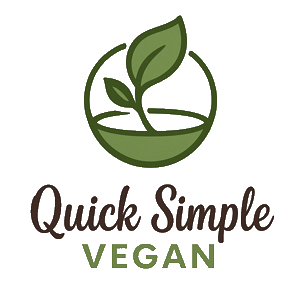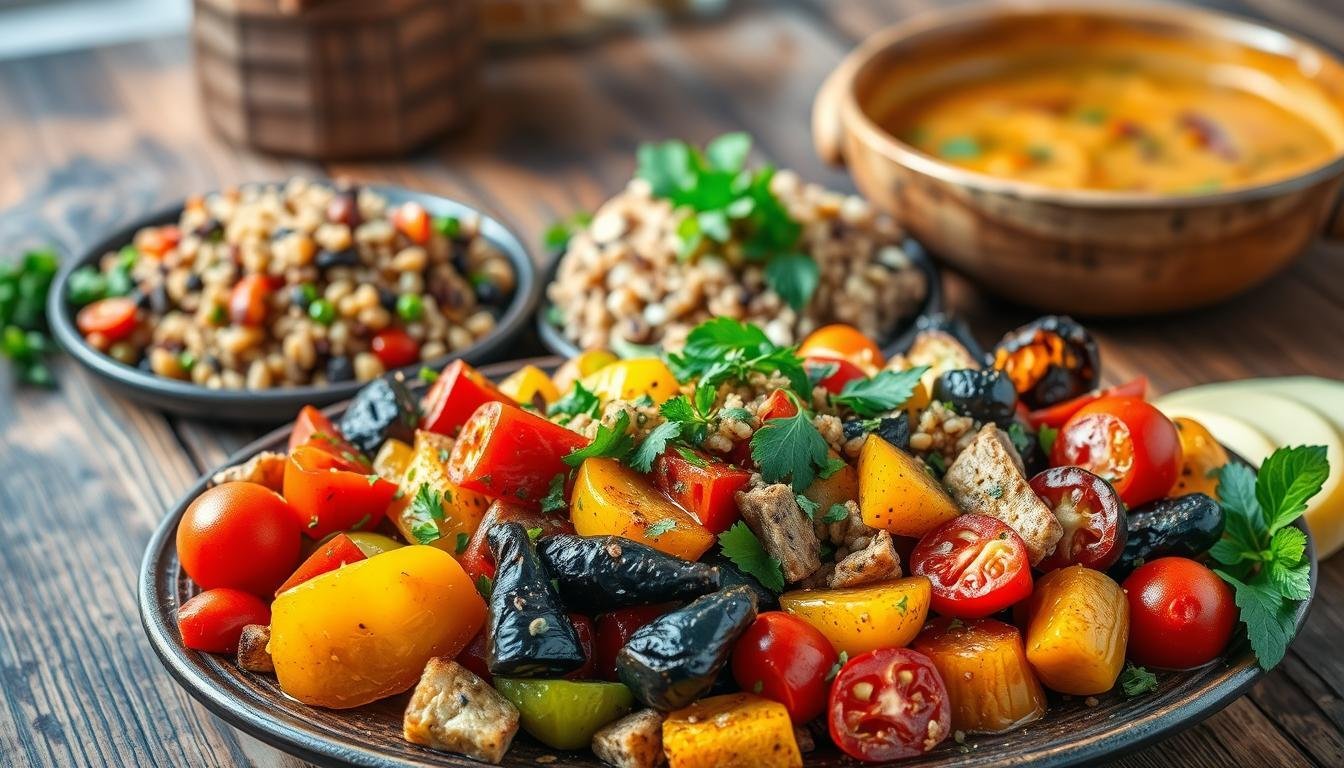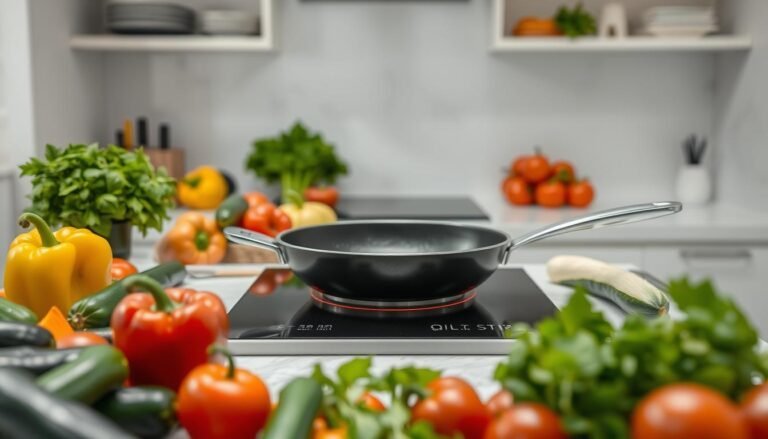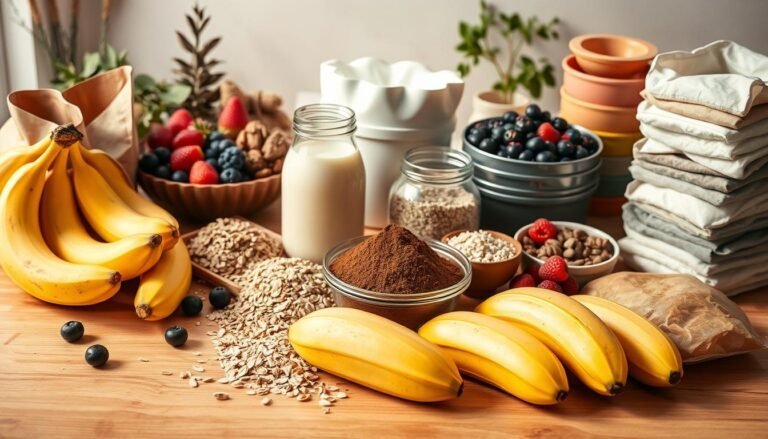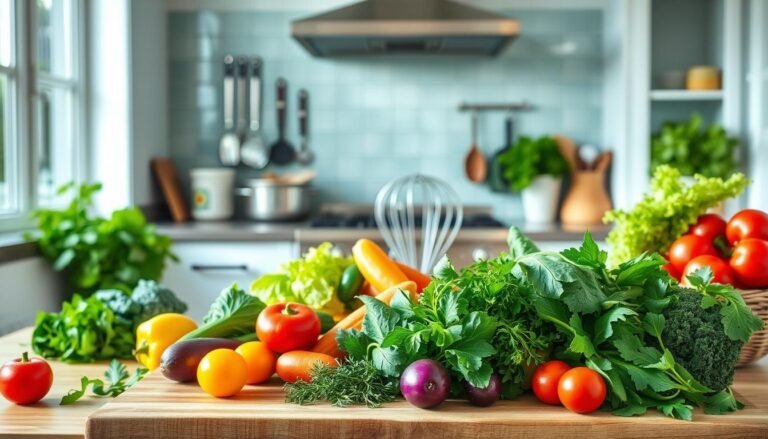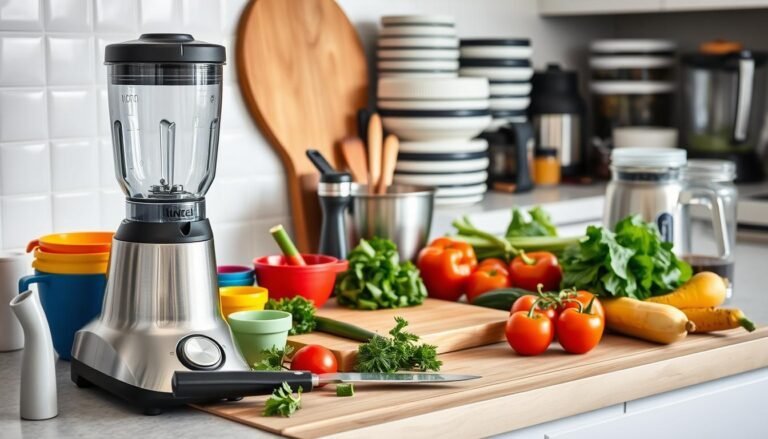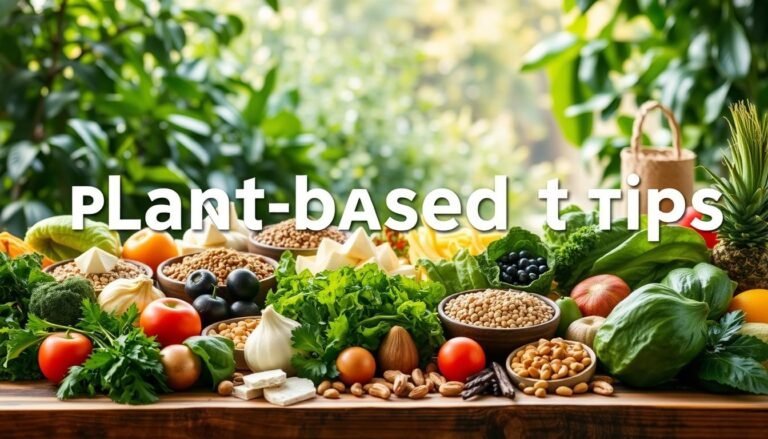Disclosure: This Post Contains Affiliate Links; We earn a commission on purchases.
Vegan food has grown a lot, with many flavorful vegan meals for different tastes. Plant-based cooking is all about being creative and trying new things in the kitchen.
There are lots of vegan recipes out there, like creamy pastas and vegan tacos. Home cooks can try new flavors and ways to make their meals better. The secret to great vegan dishes is knowing how to mix and layer flavors well.
This article will share useful tips and methods for adding depth to vegan cooking. You’ll learn how to make your meals not just healthy but also tasty and fulfilling.
Key Takeaways
- Discover new vegan recipes to inspire your cooking.
- Learn techniques for balancing flavors in plant-based cooking.
- Explore the variety of flavorful vegan meals you can create.
- Understand the importance of layering flavors in vegan dishes.
- Get tips on making your vegan meals more delicious and satisfying.
The Science of Flavor in Plant-Based Cooking
To make vegan cooking better, you need to know about flavor science. It’s important to mix different tastes well. This makes meat-free meals tasty.
The Five Basic Tastes in Vegan Cuisine
The five basic tastes are sweet, sour, salty, bitter, and umami. Umami is the savory taste. It makes plant-based dishes richer.
Ingredients like mushrooms and soy are full of umami. They help make vegan recipes more complex.
Balancing Flavors for Satisfying Meat-Free Meals
To balance flavors, mix the five basic tastes together. For example, sweet roasted veggies with sour citrus or vinegar work well. Spices for vegan dishes add depth and warmth.
Knowing flavor science helps cooks make vegan meals delicious and satisfying.
Umami Boosters: The Secret to Savory Vegan Dishes
To make vegan dishes unforgettable, knowing about umami boosters is key. Umami, the fifth taste, brings depth and complexity to plant-based foods. It makes them more satisfying and fun to eat.
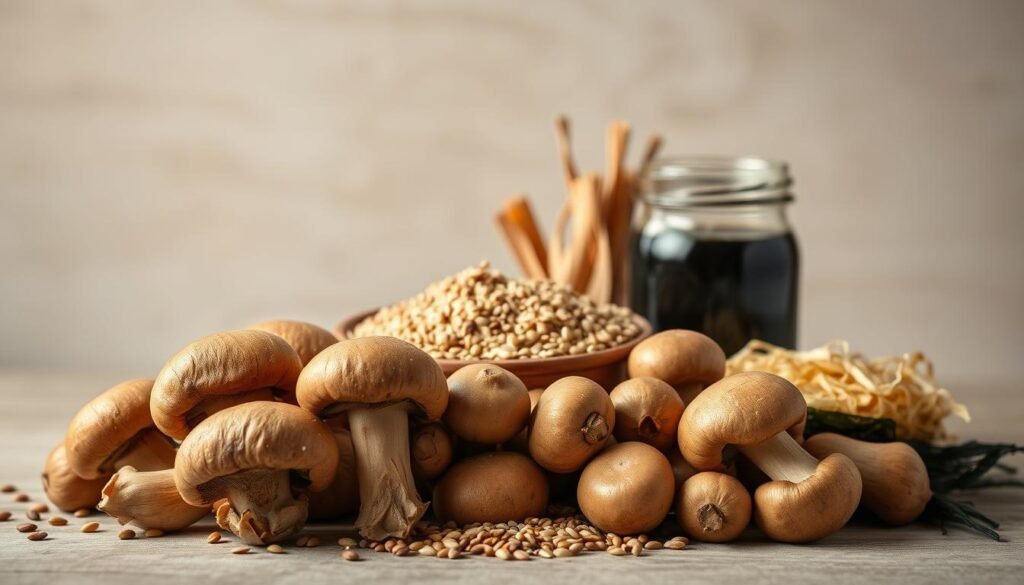
Nutritional Yeast and Its Versatile Applications
Nutritional yeast is a favorite vegan ingredient. It tastes cheesy and nutty. It’s full of umami and can be used in many dishes, like soups, salads, and even popcorn.
Mushrooms: From Shiitake to Porcini
Mushrooms are great umami boosters. Shiitake and porcini mushrooms have rich, earthy tastes. They’re good fresh or dried and add flavor to sauces, stews, and risottos.
Fermented Soy Products: Miso, Tamari, and Tempeh
Fermented soy products are also packed with umami. Miso, tamari, and tempeh can enhance many vegan dishes. They’re great in soups and stir-fries.
Using these umami boosters in your vegan cooking makes dishes flavorful and filling. Try mixing different ingredients to find the perfect flavor balance in your plant-based meals.
Herbs and Spices That Transform Plant-Based Meals
Herbs and spices are key in vegan cooking. They turn simple dishes into amazing meals. The right mix can make a big difference, adding depth and warmth to vegan food.
Essential Dried Herbs for Your Vegan Pantry
Having the right dried herbs is important for flavor in vegan dishes. Oregano, thyme, and basil are great for many recipes. They add taste and are good for you too.
Fresh Herbs and When to Use Them
Fresh herbs add a special touch to vegan dishes. Cilantro, parsley, and dill are great for salads, soups, and sauces. Add them at the end to keep their flavor and smell.
Global Spice Blends for Diverse Vegan Cooking
Trying global spice blends can make your vegan cooking exciting. From Indian to African and Middle Eastern flavors, there’s a lot to explore. Curry powder, ras el hanout, and berbere spice can change your meals in a good way.
Using these herbs and spices can make your vegan food rich and varied. It will be full of flavor and depth.
Easy Ways to Add Flavor to Vegan Dishes Through Cooking Techniques
Learning cooking techniques is essential for vegan dishes. The right methods can make your plant-based meals taste better.
Roasting and Caramelization for Natural Sweetness
Roasting vegetables makes them sweet through caramelization. This happens when they cook at high temperatures. It boosts flavor and adds texture.
To get the best taste, toss your veggies in oil. Then roast them in the oven until they’re golden.
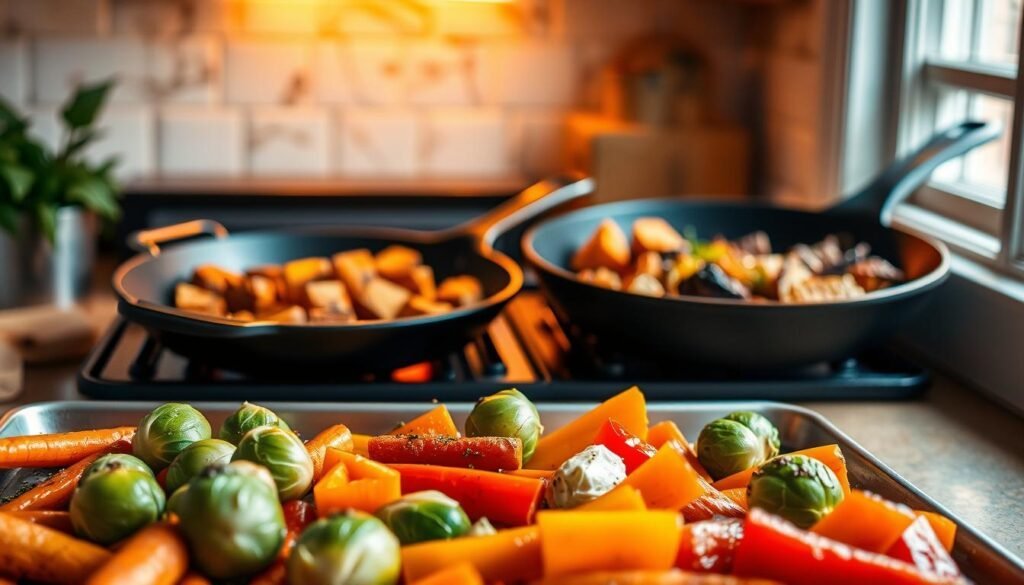
Sautéing and Creating Flavorful Fond
Sautéing cooks ingredients fast while keeping nutrients and flavor. The right pan and oil help create a tasty fond. This fond makes a great sauce for your meal.
Slow Cooking and Infusion Methods
Slow cooking infuses flavors into vegan dishes. Cooking ingredients low and slow lets flavors mix well. It’s perfect for stews, soups, and curries.
Using these cooking techniques can significantly enhance the flavor of your vegan dishes. This makes them more enjoyable and satisfying.
Acids and Brightness: Adding Dimension to Vegan Foods
To make vegan foods more interesting, knowing about acids is key. Acids balance flavors, cutting through richness and making taste better.
Vinegars: From Balsamic to Apple Cider
Vinegars add depth to vegan dishes. Balsamic vinegar has a rich, fruity taste, great for dressings and marinades. Apple cider vinegar is tangy and slightly sweet, good in sauces and braising liquids.
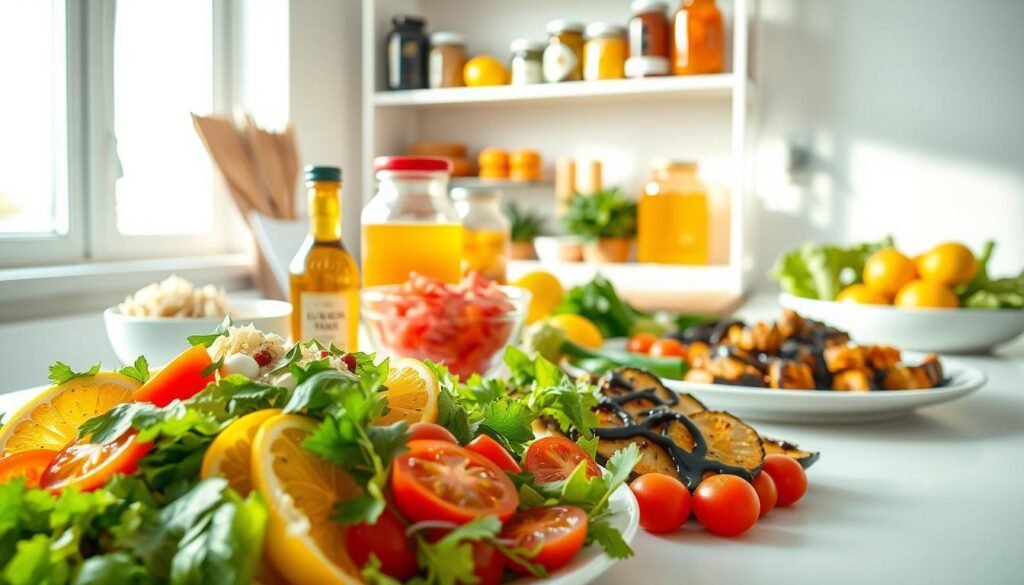
Citrus: Zest, Juice, and Preserved Options
Citrus fruits like lemons and oranges add a bright, refreshing taste. Citrus zest gives a burst of flavor, while juice adds liquid acidity. Preserved citrus, like lemon pickles, adds a salty, tangy taste.
Fermented Foods: Kimchi, Sauerkraut, and Beyond
Fermented foods like kimchi and sauerkraut add a sour, umami flavor. They make vegan meals better and are good for your gut health.
Using vinegars, citrus, and fermented foods in vegan recipes makes meals more flavorful. This way, vegan dishes become balanced and exciting, improving overall taste.
Healthy Fats as Flavor Carriers in Vegan Cooking
Healthy fats are key in vegan cooking. They carry flavors and make dishes taste better. They also add nutrition and make us feel full.
Culinary Oils and Their Smoke Points
Culinary oils are vital in vegan cooking. They bring different tastes and textures. It’s important to pick oils with the right smoke points for cooking.
Avocado oil is great for high heat. Extra virgin olive oil is best for low heat or as a finishing touch.
Nuts and Seeds: From Toasting to Sauces
Nuts and seeds add texture and flavor to vegan dishes. Toasting them brings out their taste. Blending them into sauces makes dishes creamy.
Almonds, cashews, and sesame seeds are popular choices.
Creamy Elements: Avocado, Coconut, and Nut Butters
Creamy elements add richness to vegan dishes. Avocados make creamy sauces. Coconut cream works in sweet and savory dishes.
Nut butters like peanut butter and almond butter add creaminess and flavor.
- Avocado oil for high-heat cooking
- Coconut oil for its distinct flavor
- Olive oil for low-heat cooking or as a finishing touch
Creating Depth Through Homemade Vegan Flavor Enhancers
Make your vegan dishes better with homemade flavor enhancers. You can make your own sauces, dressings, and stocks. This way, you control the flavors and ingredients, making sure they’re just right for you.
Quick Plant-Based Sauces and Gravies
It’s easy to make quick plant-based sauces and gravies. For example, a rich umami gravy needs sautéed mushrooms, vegetable broth, and a bit of nutritional yeast. Or, you can mix cooked tomatoes with garlic and herbs for a tomato-based sauce. These sauces are great for adding flavor to vegan dishes like lentil stews or roasted veggies.
- Mushroom gravy: sautéed mushrooms, vegetable broth, nutritional yeast
- Tomato sauce: cooked tomatoes, garlic, herbs
- Pesto sauce: basil, garlic, pine nuts, olive oil
Dairy-Free Dressings and Creams
Dairy-free dressings and creams are easy to make and come in many flavors. A creamy ranch dressing uses vegan mayonnaise, dried herbs, and lemon juice. For something lighter, try a vinaigrette with apple cider vinegar and olive oil. These dressings are perfect for salads, sandwiches, and wraps.
- Creamy ranch: vegan mayonnaise, dried herbs, lemon juice
- Vinaigrette: apple cider vinegar, olive oil
- Tahini dressing: tahini, lemon juice, garlic
Vegan Stocks, Broths, and Bouillons
Vegan stocks, broths, and bouillons are key for many plant-based dishes. A rich vegetable broth is made by simmering veggies and mushrooms in water. For deeper flavor, try a mushroom broth with different mushrooms. Use these as a base for soups, stews, and sauces.
Conclusion: Bringing It All Together for Delicious Vegan Meals
Creating flavorful vegan meals is easier than you think. Learn about flavor science and use umami boosters. Add herbs and spices to make your plant-based cooking stand out.
Try different cooking methods like roasting and sautéing. Add acids and healthy fats for extra flavor. Making your own vegan sauces and stocks can also make your meals richer. For easy vegan recipes, check out No Sweat Vegan.
By mixing these tips, you can make tasty vegan meals. These dishes will impress everyone, vegans and non-vegans. So, start experimenting and enjoy the world of vegan recipes and plant-based cooking.
FAQ
What are some easy ways to add flavor to vegan dishes?
How can I balance flavors in vegan cooking?
What is umami and how can I incorporate it into my vegan cooking?
How can I use herbs and spices to enhance flavor in vegan cooking?
What cooking techniques can I use to enhance flavor in vegan dishes?
How can I add brightness and dimension to vegan foods?
What role do healthy fats play in vegan cooking?
How can I create depth in vegan cooking through homemade flavor enhancers?

Focused on simplicity and flavor, Ryan helps readers create quick vegan meals and snacks without the overwhelm. Whether you’re new to vegan cooking or just want to keep it simple, Ryan’s tips, guides, and no-fuss approach make plant-based eating accessible and enjoyable for everyone.
Subscribe to Our Newsletter
